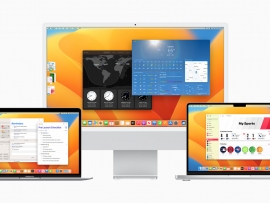Jump to:
- Top project management software
- Honorable mentions
- What is project management software?
- Project management software features
- Considerations for PM software
- What makes the best PM software?
After two months of reviewing the best in project management software solutions, I can attest there’s no shortage of solutions capable of transforming process and team management.
From developers to restaurant managers and department heads to startup founders, PM software offers a universe of teams and industries a central platform to plan, collaborate, and execute tasks.
Top project management software
I reviewed ten project management platforms to review their capabilities and ease of use for an IT project. Below I’ve summarized those findings and linked to the full review in each section.
Jump to:
monday.com

The monday.com Work OS is a reputable project management brand with a flexible platform for teams of all flavors. While initially intimidating, the monday.com interface is packed with features and offers extensive configuration management capabilities. While other solutions lean into a few views of project data, monday.com gives users the most flexibility in adding and configuring valuable visualizations.
Though I ran into hiccups using monday.com, the PM software excels in configurability, giving teams the expected control to optimize workflows.
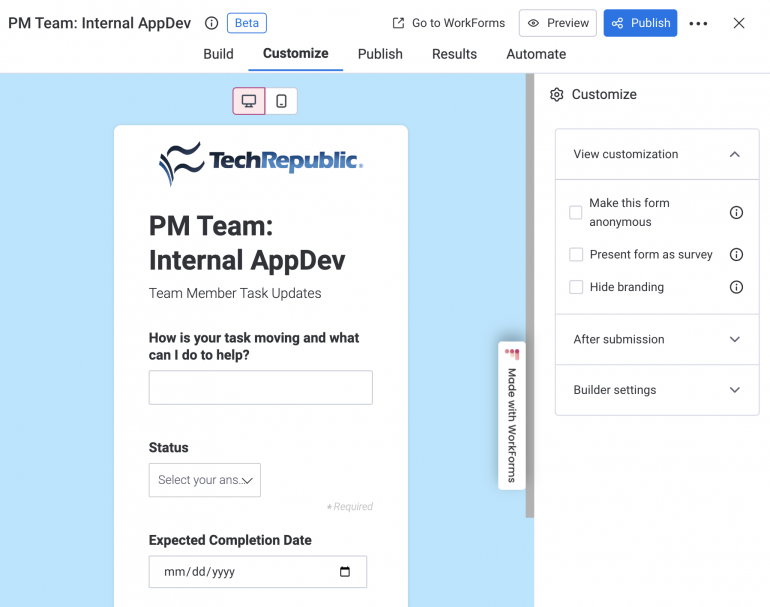
Features of monday.com
- Visualize project data through multiple table, Kanban, and dashboard views.
- Personalize colorful interfaces that bring project data to life.
- Customize and share surveys for data collection via the WorkForms tool.
- Access integrations for developers, marketing, CRM, and project management.
- Pre-built automations and a long list of options for creating automation rules.
Pros of monday.com
- Clean user interface not bogged down by the platform’s extensive features.
- Robust configurability for setting the workspace and tools to team specifications.
- Designed for a multitude of use cases across industries and functions.
Cons of monday.com
- An evident learning curve for new users and implementing advanced features.
- Import engine failed to pull most existing data into the platform.
- Manually inputting data to reconcile import was the biggest pain point.
SEE: monday.com Work OS review (TechRepublic)
Smartsheet
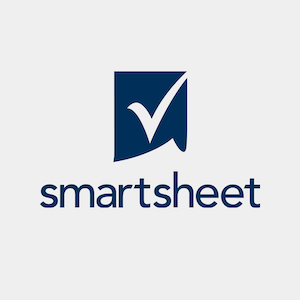
Launched in 2005, Smartsheet’s project and work management platform is one of the safest bets in the PM software market. From onboarding to using the platform, I was impressed by the interface’s user-friendliness and the features’ extensibility. Smartsheet offers an upgrade from traditional tools by adding accessible UX, needed integrations, robust configurability, and no-code capabilities to a spreadsheet interface.
Smartsheet pricing is among the highest in the market, and there is no unlimited free plan. Still, I believe the platform’s benefits more than justify consideration for small teams up to enterprise organizations.
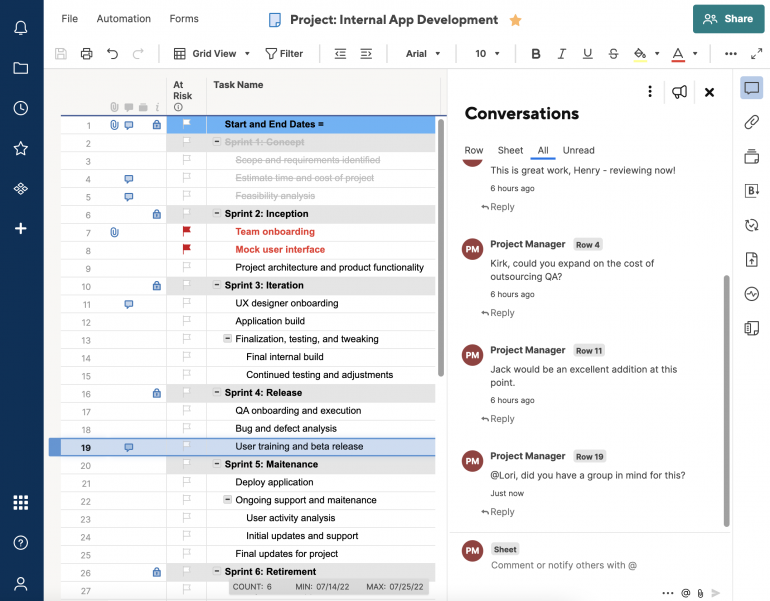
Features of Smartsheet
- Create, import, and manage project data in a central cloud-based platform.
- Visualize project data through Grid, Gantt, card, and calendar views.
- Flexible options for setting and adjusting project field data.
- WorkApps, the platform’s no-code tool for building web and mobile apps.
- Activity log for tracking change management with filters to identify actions.
Pros of Smartsheet
- Friendly user interface for moving from legacy spreadsheet tools.
- Extensive documentation and access to onboarding assistance.
- Pre-built project and automation templates to get to work fast.
Cons of Smartsheet
- Several tools are add-ons requiring an additional purchase.
- Security features limited to the Enterprise subscription.
- Premium support only available for higher tier plans.
SEE: Smartsheet review (TechRepublic)
ClickUp

The fastest mover in the project management software space is ClickUp. Only five years after its founding, the San Diego-based startup has grown into one of the top PM solution providers. ClickUp far exceeded my expectations with a stack of project views and tools to enable productivity and collaboration for a wide variety of functional teams.
Add in that ClickUp offers a handful of affordable subscriptions for different team sizes, and it’s difficult not to consider the market’s budding PM software.
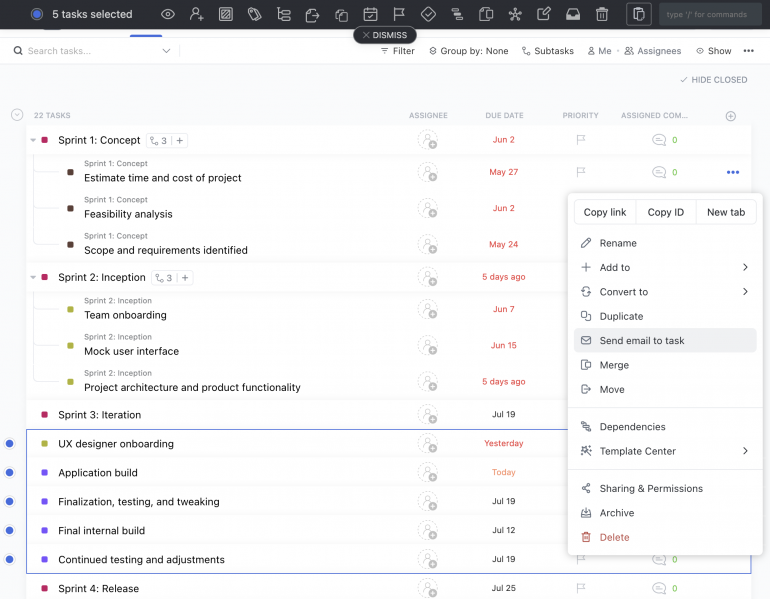
Features of ClickUp
- Visualize project data through List, Board, Gantt, Calendar, Workload, and Map views.
- Create and modify tasks or bulk edit tasks from a list of potential operations.
- Manage granular configurations of platform features and security.
- Track and visualize project data through the Dashboards view.
- Import data from monday, Asana, Trello, Jira, Wrike, Basecamp, and Todoist.
Pros of ClickUp
- Widest and most affordable range of plans to meet different-sized team needs.
- Robust configurability for customizing and managing platform workflows.
- Access to over 1,000 integrations for developers, business suites, storage, and more.
Cons of ClickUp
- Slight variance between imported file and platform results.
- Some platform actions are less intuitive and require additional troubleshooting.
- Occasional lagging between moving pages and lingering platform notices.
SEE: ClickUp review (TechRepublic)
Teamwork
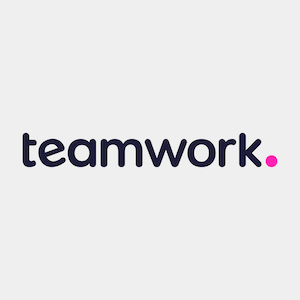
As the name implies, Teamwork is project management software that enables team and workload management. The Ireland-based platform offers a similar range to other top PM solutions but excels in time tracking, budgeting and stakeholder management. Whether it’s personnel or a third-party contractor, Teamwork is fit for optimizing the globally distributed workflows of tomorrow.
While a few actions during my experience with Teamwork didn’t seem as intuitive as other platforms, the platform and its potential to organize team projects are impressive.

Features of Teamwork
- Visualize project data through Gantt, Kanban, calendar, and table views.
- Build and generate reports of project data to share via CSV, Excel, or PDF.
- Create project templates, dashboards, risks, and project level tags for re-use.
- Integrations with Zapier, Google Drive, Box, Slack, Microsoft, HubSpot, and more.
- Built-in Teamwork apps for collaborative spaces, IT help desks, CRM, and web chats.
Pros of Teamwork
- Strongest time tracking and workload management capabilities of the products I reviewed.
- Deep range of features emulating the best in the PM software market.
- Free 30-day trial, an unlimited free plan, and affordable annual subscriptions.
Cons of Teamwork
- Basic agile support and burndown reports are only available with higher plans.
- Configure notification settings or get ready for a full inbox.
- Modifications sometimes took several seconds to load.
SEE: Teamwork review (TechRepublic)
Wrike
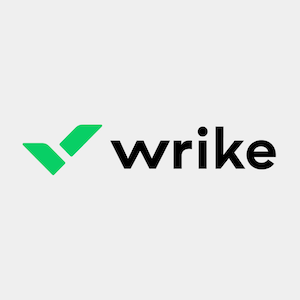
The newest subsidiary of Citrix, Wrike was already one of the biggest names in project management software even before its backing by the cloud computing giant. With the capacity to manage entire project portfolios, Wrike’s feature set includes custom request forms, risk predictions, invoicing software, and enterprise-grade security. I found the platform incredibly powerful, with clear use cases for small businesses, enterprise organizations, and various team functions.
Upon first glance, the user interface is busy, and Wrike’s learning curve is likely the steepest in the PM software space. That said, few vendors offer the same extent of enterprise capabilities.

Features of Wrike
- Visualize project data through table, list, board, Gantt, timelog, and analytics views.
- Add and edit task duration, approvals, time entries, subtasks, files, and dependencies.
- Project templates for Agile, creative, IT operations, and PM office teams.
- Customer-managed encryption keys and external encryption key storage via AWS.
- Access to over 400 app integrations and two-way sync with almost 30 other apps.
Pros of Wrike
- Plans for teams managing complex workloads, marketing, and professional services.
- Extensive interoperability and workflow capabilities with business critical applications.
- Enterprise-ready with premium security and data privacy controls.
Cons of Wrike
- More expensive than most PM solutions.
- Steep learning curve for maximizing extent of platform features.
- Several tools are only available as an add-on feature or a higher subscription.
SEE: Wrike review (TechRepublic)
Asana
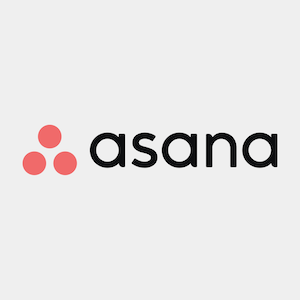
One of the most popular PM software solutions, Asana is the work management platform started by former Facebook developers in 2008. The Silicon Valley-based company has grown dramatically in that time, and the platform’s extensibility affirms why so many businesses choose it. From viewing team member workloads to adding strategic goals and setting user security policies, I believe Asana has something for every team.
Though some actions were less intuitive, Asana made up for them with the documentation and resources to guide platform projects efficiently.
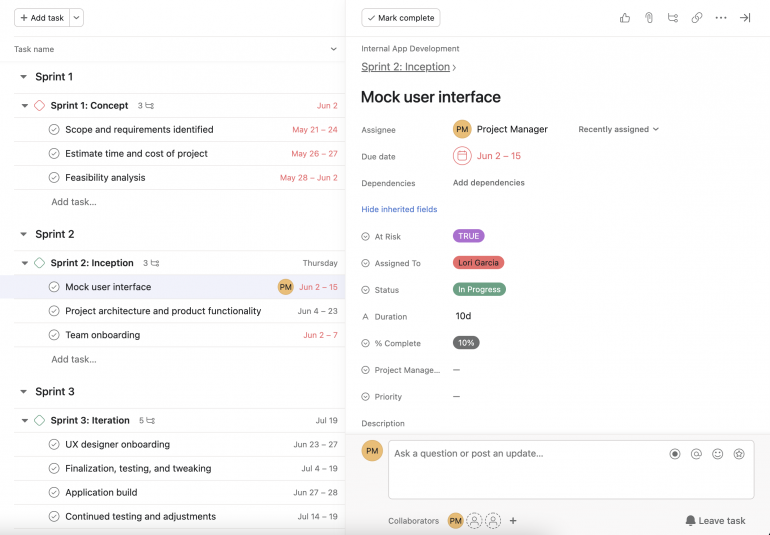
Features of Asana
- Visualize project data through list, board, timeline, calendar, and workload views.
- Manage and create project data with custom fields, rules, and forms.
- Enable the built-in time tracking tool to visualize time spent on tasks.
- Import data from Airtable, Google Sheets, monday, Trello, Smartsheet, or Wrike.
- Access to integrations for communications, files, finance, IT, reporting, sales, and security.
Pros of Asana
- Robust feature set that competes with the best in the PM software space.
- Friendly user interface and flexible controls for different tools.
- Extensive import options, including multiple top PM platforms.
Cons of Asana
- At times, the interface is less intuitive than competing PM platforms.
- Steep learning curve for deploying some features and advanced tools.
- Occasional error messages and lagging when moving between platform pages.
SEE: Asana review (TechRepublic)
Airtable

A decade after its founding, Airtable has raised over $1.4 billion to develop a PM software solution. After using it myself, I can attest it’s been money well-spent. Behind its friendly interface, Airtable is a powerful platform offering teams granular control over extensions, scripts, and workflows to optimize process management.
While the newest platform tool, the Interface Designer, struggled to maintain a server connection during use, I was impressed by my experience with Airtable.
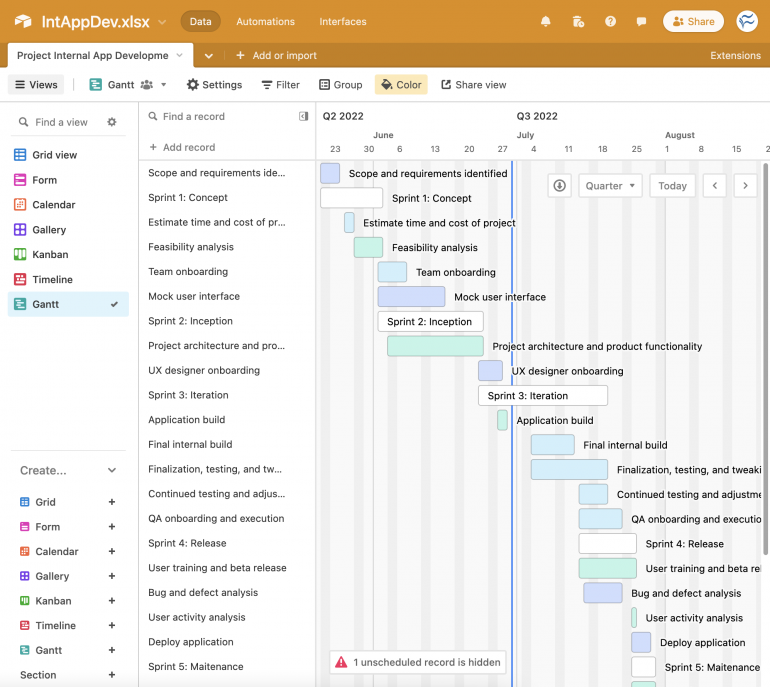
Features of Airtable
- Visualize project data through grid, Kanban, gallery, Gantt, and calendar views.
- Build an internal or external app with the Interface Designer.
- Integrate, sync, and consolidate data from Google, Salesforce and Jira to Airtable.
- Deploy pre-built and custom automations with granular control over rule scripting.
- Access to 40 Airtable-developed extensions, 20 scripts, and 150 open source apps.
Pros of Airtable
- Most accurate and seamless import process among PM tools tested.
- Clean and intuitive user interface for exploring and utilizing the platform.
- Capabilities for small teams up to enterprise organizations.
Cons of Airtable
- Limited extensions for many of the subscription plans.
- Occasional lagging when moving between data-involved views.
- Fewer enterprise integrations than other top PM tools.
SEE: Airtable review (TechRepublic)
Zoho Projects

Under the Zoho portfolio of solutions, Zoho Projects offers teams a stack of features for tracking tasks, issues, time, and resources to maximize collaboration and productivity. Users can visualize and adjust project data through views like a traditional spreadsheet, simple list, Kanban board, or Gantt chart in real time or automate mapped workflows with the Blueprints tool.
Zoho Projects offers a lot of functionality, considering it’s the most affordable PM software. However, it also lacks some of the configurability and advanced features included in the top tier of platforms.
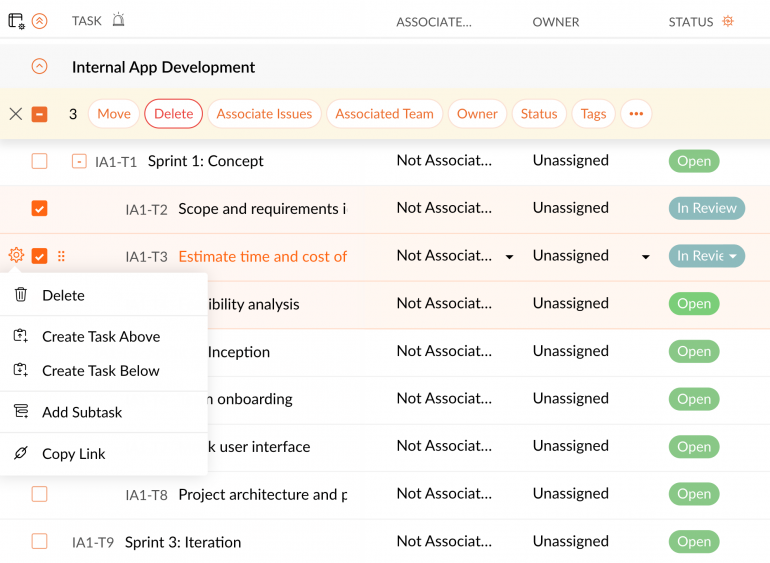
Features of Zoho Projects
- Visualize project data through Classic (spreadsheet), Plain (List), and Kanban views.
- Create project baselines to compare expected vs. real progress on tasks.
- Time tracking of tasks to inform workload and resource management.
- Integrations with critical apps for Google, Microsoft, code repositories, and more.
- Access to Zoho Apps like Mail, Docs, CRM, Desk, Analytics, and Forms.
Pros of Zoho Projects
- Least expensive subscription plans among the top PM platforms.
- Robust feature set considering its affordability.
- Familiar interface and bundling value for existing Zoho customers.
Cons of Zoho Projects
- Lagging when moving between different platform pages.
- Limited options for viewing project data relative to competitors.
- Some platform actions like creating multiple subtasks aren’t intuitive.
SEE: Zoho Projects review (TechRepublic)
Zenhub

Likely the least familiar pick, Zenhub’s native integration with GitHub gives the project management software solution a distinct advantage. Project managers unfamiliar with GitHub have a mighty learning curve, but developer teams will love the ease of managing and visualizing data through a familiar interface.
Zenhub supplements the world’s leading repository with tools like planning poker, a sprint generator, workflow automation, and reporting to make the most of GitHub project management.

Features of Zenhub
- Visualize project data through Boards, Roadmaps, and Reports views.
- Create and modify team goals by grouping issues into epics.
- Import public and private GitHub repositories into a single project platform.
- Automate common workflows and the creation of new sprints from backlog issues.
- Analyze project data with burndown, velocity, and release reports.
Pros of Zenhub
- Ideal for teams familiar with and working with GitHub repositories.
- One of the most affordable top PM solutions.
- Clean user interface with seamless integration to the GitHub platform.
Cons of Zenhub
- Less ideal for non-software development teams and project managers.
- Learning curve adjusting to platform terminology relative to GitHub language.
- Limited to teams utilizing GitHub as a repository management software.
SEE: Zenhub review (TechRepublic)
Jira Work Management

Atlassian’s portfolio of collaboration, code management, and security solutions is led by its flagship project tracking software, Jira. In response to a growing number of general-use project management solutions, Jira Work Management—an extension of Jira Software, which is designed to be used by developer teams—offers a similar mix of project data views, reporting, and configuration capabilities.
Jira Work Management is ideal for organizations already using Jira Software or teams relying on integrations like private repository host BitBucket. Otherwise, its general PM use functionality is below par relative to the broader PM marketplace.

Features of Jira
- Visualize project data through list, board, timeline, and calendar views.
- Import existing work to create project issues and collect data through forms.
- A Summary page embedded with KPIs for progress, priorities, and workloads.
- Full integration with Jira Software and other Atlassian tools.
- Start from 20 pre-built templates for finance, marketing, HR, and legal teams.
Pros of Jira
- More than 500 integrations and 3000 extensions for workflow apps.
- Bundle with Atlassian’s portfolio of tools like BitBucket, Crucible, and Trello.
- Built-in time tracking tools for tracking effort against tasks.
Cons of Jira
- Higher learning curve for non-software development teams.
- Not as intuitive as other top PM tools.
- Still a developing application relative to Jira Software’s accolades.
SEE: Jira review (TechRepublic)
Honorable mentions
- Adobe Workfront
- Celoxis
- Hive
- LiquidPlanner
- Kantata Cloud for Professional Services [formerly Mavenlink + Kimble}
- Meister
- Microsoft
- Planisware
- Planview
- Sciforma
What is project management software?
Project management software is the on-premises or cloud-based solution developed to enable the planning and execution of project tasks for various teams and functions.
Most PM solutions today are available through a cloud-based platform for teams to create and modify projects, tasks, and workflows through collaborative spaces and views. Project managers are most hands-on in configuring the software to set team use guidelines, integrate critical applications, and optimize the project management life cycle.
Project management software features
While various project management platforms offer a range of potential productivity, collaboration, and process improvement opportunities—there is a standard set of features that threads the market together.
Project data views and visualizations
Tenured professionals probably know their way around a spreadsheet, but the PM market shows how far collaboration and project visualization software has come in almost four decades.
Teams can collaborate with their project view of choice from several different perspectives. The most common project views offered include:
- Table or grid or spreadsheet separated by columns and row field values.
- List usually shows the primary column and its field values.
- Kanban board divided by lanes representing a condition and cards for field values.
- Gantt chart or timeline showing dependent tasks and the timeline available for each.
- Calendar with a standard calendar reflecting project data.
- Dashboards break down project data with configurable widgets.
- Workloads showing team member tasks against a timescale.
Web-based spreadsheets like Google Sheets and Excel via Microsoft 365 remain popular solutions and the primary predecessor application to adopting PM software. As a result, most PM solutions offer a similar starting point (e.g., table view) to deliver a clean onboarding experience. From there, Kanban-style boards are the second most popular view with roots in Agile software development, followed by time-based views like Gantt charts and calendars.
Dashboards are another standard view, giving users a pre-built or configurable space to visualize project metrics. Not all dashboards are created equally, so note those offering the most flexibility with building widgets reflecting team KPIs.
Data manipulation and workflow automation
The unique tools offered by PM platforms are those capable of transforming project data into real-time visibility and actionable insights. While this varies between solutions, the above views can filter data by platform or field value condition. Widgets for tracking project data are another critical ingredient to plan and act on insights.
Automation is also a standard tool across PM solutions, offering some extent of pre-built automation rules and the option to build your own. Pre-built automations are as simple as sending a notification to Slack when a task’s status changes; meanwhile, most offer a list of prospective trigger and response actions to ease workflows and reduce manual efforts.
Reporting and analysis
While entire companies can adopt project management software, its typical deployment is within a select department or team. In either case, reporting and metric visibility for internal personnel and external stakeholders is often necessary.
Every PM platform offers some way to export or share project data, but these methods vary. The classic option is exporting a set of data or metrics as a .CSV or .PDF document. Another popular choice for PM solutions, like in the case of Airtable, is designing a shareable webspace capable of modification or view-only. Stakeholders can get a quick, in-platform view of needed data.
Considerations for PM software
Use cases and audience
Most project management software solutions speak to a broad audience of potential use cases. Across industries and departments, the use cases mentioned most for PM tools include:
- Agile, Scrum, and other software development methodologies
- Campaign and client management
- Content creation and digital asset management
- Event planning and management
- Issue, request, ticket, and bug tracking
- Lead tracking and sales pipeline
- Onboarding and offboarding personnel
- Product management and features backlog
- Resource, time, and workload allocation
Integrations
As with the two software development PM picks, the range of integrations offered by top project management platforms is a crucial differentiating factor. Teams across the globe increasingly rely on a stack of applications to conduct everyday work. Considering PM software is meant to enable productivity in teams existing workflows, the lack of a critical integration is a dealbreaker.
Customer support and service
Finally, teams relying on PM software for critical business operations also need to ensure the level of technical support meets expectations. Teams are bound to encounter unexpected outages, roadblocks, and platform issues, making regular availability by phone or web chat essential to business continuity.
What makes the best PM software?
When asked to review the top PM tools, my view from a glance told me the market was generic, with minute differences between some platforms. While commonalities exist, like visualization tools or workflow automation pipelines, there is enough to differentiate the market.
The best PM platforms stand out with the intuitiveness of their UX, advanced features, and integrations critical to team processes. Like most software choices, it’s easy to sign up, and all featured solutions offer a free trial without a credit card to avoid unnecessary expenses. Teams must ultimately ask how the platform will replace legacy tools like Excel spreadsheets, improve project management, and lastly if the cost and utilization will justify those benefits.







